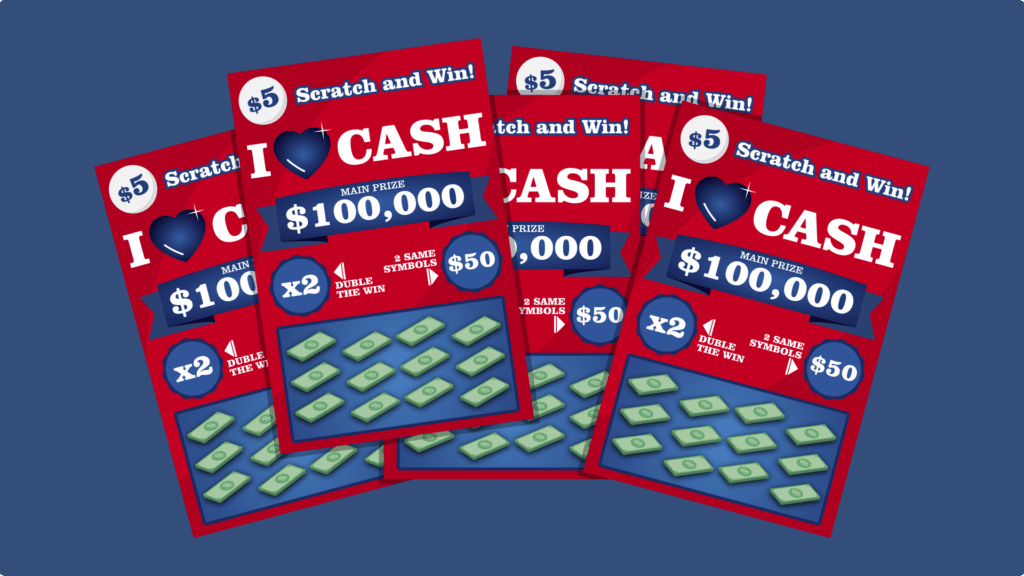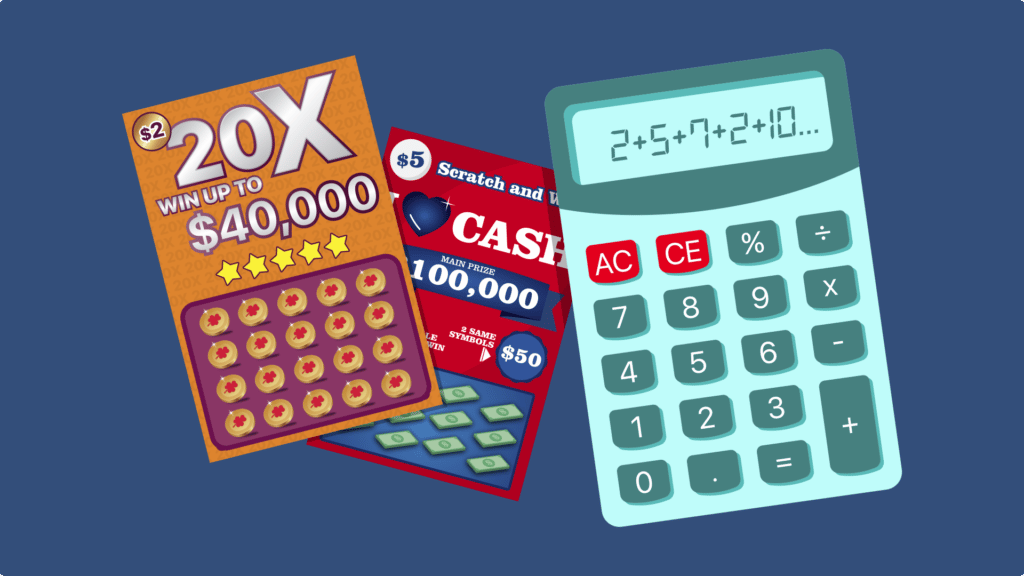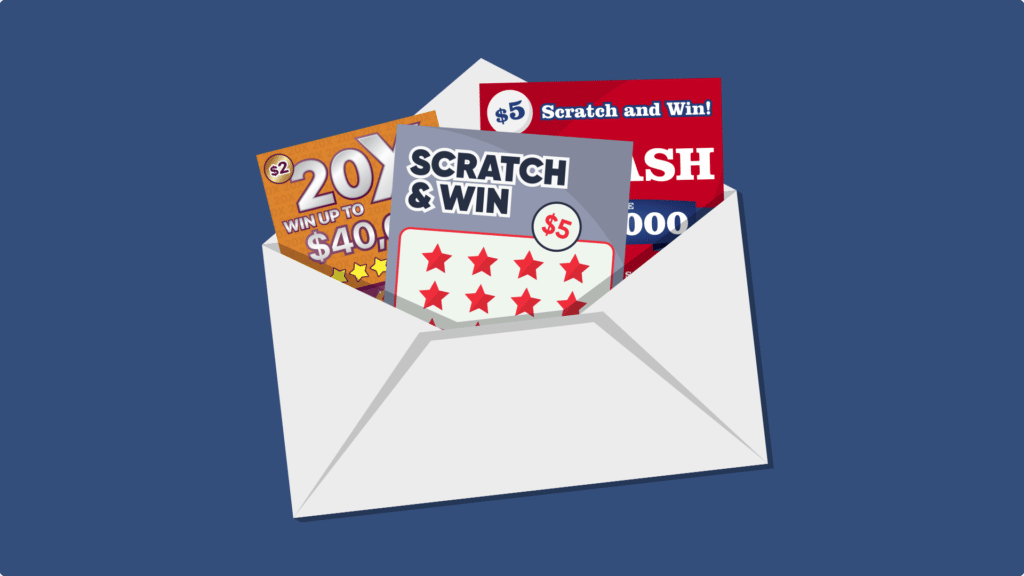One of the best things about legal and regulated gambling is that the industry as a whole has become more casual and laid-back. Don’t get us wrong – we love the likes of poker, blackjack and baccarat, but sometimes, all of these games can be too much work.
The player might just want to place a wager and not think about any strategies or tactics. That’s why scratch cards are ideal.
As relaxing as it is not to have the burden of strategizing, having next to no impact can be a bit unsettling. But that’s just at first glance. It turns out that players can do a thing or two to boost their odds of winning scratch cards.
Our team asked industry experts and veteran players for their opinions and experiences, and they’ve dropped some pretty useful knowledge on us. Let’s take a look at how to bring Lady Luck to our side, shall we?
Table of Contents
1. Read Every Material Possible About a Specific Card
Whether it’s online scratch cards or physical ones, people seem to think they’re somehow very different from casino games or sports betting. The truth is that the concepts are very similar to one another. The service provider outlines the rules and tweaks the odds so that they end up profiting in the end. By purchasing the service (scratch cards, in this case), you, the individual, accept the terms outlined by the provider. But why is this important for scratch cards?
We’re drilling this point in because some scratch card manufacturers tend to put some pretty interesting things in small print. For instance, card A might promise a $1,000,000 grand prize, while card B is only offering $500,000. Looking at the two initially, you’d obviously choose the first one. Why settle for a smaller prize, right?
Makes sense, but that’s not the whole story about scratch cards. Lotteries and other manufacturers tend to put different odds on their products, regardless of how big the prize is. So if the odds are 1 in 20 million for the $0.5 million and 1 in 50 million for the $1 million, things get a bit different. Players should always choose the best odds-reward ratio. If the amount of money is big on its own, why go for the longer odds?
You can find more information on the manufacturer’s website or on the back of the scratch card itself. Before making a purchase, compare multiple solutions and don’t be afraid to experiment every once in a while.
2. Bulk Purchases May Be a Good Idea
Scratch card players are big adherents to the Law of Averages. This is a theory that, over a period of time that’s long enough, the frequency of an outcome will be approximate to its probability. In simpler terms – averages even out over time.
For example, let’s say that 1% of the whole US population (~300 million) has a PhD and, at the same time, that you have three people with a PhD in your building, which has 100 people living in it. Even though the data might seem contradictory, it’s not. The sample size in your building is not enough to draw a conclusion, whilst 300 million is sufficient. Scratch cards are no different.
When you’re buying one card at a time, it’s a shot in the dark. But when you do so in bulk, you can rely on the Law of Averages and increase your chances of winning. This is especially true for smaller prizes, which have a frequency that’s usually around the 1 in 100 mark.
While there is no official confirmation from manufacturers, some players theorize that scratch card prizes are allocated according to individual orders, i.e. every gas station or bodega will have a certain amount of lower-tier prizes. Thus, using the Law of Averages, and the potential validity of this theory, buying an entire roll may be more fruitful than buying one scratch card.

3. Cheaper Isn’t Always Better
There’s no shortage of available scratch cards nowadays, that’s for sure. Whether it’s cash prizes or something like a car or a trip, there’s something for everyone. And don’t even get us started about big jackpots vs. smaller prizes. However, the biggest and most significant divide is in the pricing department.
Cheaper tickets are the most popular because the logic of the average person is that they want to spend the least amount of money for the biggest possible prize. In a vacuum, this makes economic sense, but we don’t live in a vacuum. Yes, a 10-cent scratch card is cheaper than a $1 one, but it most likely has a much smaller prize pool and fewer different prizes overall.
That’s why you shouldn’t be swayed by colorful letters or suggestive advertising. Once you read the small print and find more details online, you can effectively rank your options. Whether it’s local store-bought scratch cards or ones found at online casinos, the principle is the same – look at all the factors. Prizes, the number of fields, pricing, levels of prizes and more contribute to a great scratch card.
4. View Them as Slots
Even with tips like this, people think that they’re getting a strategy that’ll help them win. It won’t. Scratch cards are purely luck-based, and the only determining factor is the symbols put underneath the coating. This is done in a factory, and the lottery or whoever has no knowledge of what card gets sent where. So unless you have insider information (which would be illegal), it’s pure gambling.
That’s why you should view scratch cards as slots. Pushing the Spin button and scratching the coating with your keys are not so different after all. Once you realize this, you’ll be able to adopt a more relaxed way of thinking. This will prevent you from making rash decisions or spending too much. It’s especially useful if a new card seems enticing, but you don’t know much about it.
5. Budgeting is Everything
As we said previously, scratch cards are so popular because they’re cheap and don’t take up more than a minute of your time. Sure, poker is fun, but you have to learn the rules and take a significant financial risk. Plus, even a casual game can last for more than an hour. All of this is definitely a good thing, but it’s also a double-edged sword. Nobody thinks about budgeting because of this accessibility.
It’s easy to lose control precisely because scratch cards are so inexpensive. If you go to a land-based casino and lose $500 on roulette, the loss will sting, and you’ll think twice about wagering that much. On the other hand, less than a dollar isn’t much. Then, all of a sudden, you catch yourself buying bigger and bigger bulks. Prevent such a thing before it happens.
Scratch cards are entertainment and should be treated as such. You won’t ‘beat the odds’ or win the jackpot most likely. Thus, set a strict budget and stick to it. No matter how much you win or lose, don’t exceed the amount you promised yourself you won’t.

6. Play One Game at a Time
The point that scratch cards are slots still stands. But just like with slot machines, there are different kinds of cards available. Win-or-not is the simplest format, and it features a single field, with a symbol only shown if the player won the jackpot. However, these got boring pretty quick, so lotteries soon moved to combos and tic-tac-toe games with money symbols and amounts.
Relying on the Law of Averages, it’s evident that you will be mathematically more likely to win at least something if you focus on one game. No matter how many scratch cards you buy cumulatively, it only makes sense if each game has a big enough sample size. To save money and prevent yourself from falling into a trap, do one game at a time.
Remember, the best way to approach this niche is to do it moderately and look to game the numbers in the long run. The more scratch cards you buy, the closer you will be to reaching the odds signified by the lottery.
7. There is no Strategy or Consistency
We can’t stress this enough. You’ll always see websites and quasi-experts trying to sell you or teach you strategies that claim to ‘game the system.’ There is no such thing, especially because scratch card symbols are covered by a coating, and no one knows what might be underneath them.
Even if you buy in bulk, it’s statistically probable that almost all cards will be completely priceless. Of course, the individual probabilities depend on the game’s setup, odds and rules, but the rule of thumb is that everything is down to luck.
Don’t get carried away. Smaller prizes are especially dangerous because even a $100 card is an attractive opportunity for some people. And before they know it, they ended up spending more than even the smallest prize without winning anything.
8. Keep Older Tickets
When buying scratch tickets, our instinct is to always throw the losing ones away. And why would you keep a worthless piece of cardboard anyway? Well, it turns out there are good reasons for storing your losing tickets away. Since this gambling niche is particularly sensitive to mistakes and manipulation, there have been recalls and similar situations.
If you weren’t aware, most scratch card games come in fairly limited series and amounts. Only the biggest and most popular ones get extensions. Why is this important? There are cases when no one wins the jackpot, which leaves the prize pool mostly intact. As a means of getting some good PR, the lottery asks people to send in their losing scratch cards. Afterwards, there’s a draw and the jackpot is usually split between people.
This is another reason why buying in bulk is a good idea. You can scratch the coating off immediately and store them in a folder somewhere. Make sure you inform yourself about when the game ends, just so you can plan your purchases accordingly.

9. Submit Every Ticket, Just in Case
Scratch card games are more convoluted than ever. While most are still relatively easy to understand, there are some with strange win requirements. Random positioning is the biggest problem, as it’s hard for players to immediately notice if the symbols are aligned or not. Many believe this is a deliberate tactic by lotteries. If the symbols have to be placed unconventionally, then it’s likely that someone will throw a winning ticket away and that the money will remain un-awarded.
That’s why you should submit every losing ticket you have. Sometimes, you might not have noticed a particular alignment. You wouldn’t believe how often people only scratch their cards partially. After they think they saw a losing symbol, they stop, unaware of the fact that they were a few scratches away from the prize.
10. Use the Singleton Method
Despite sounding like a statistical approach developed by an MIT professor, the Singleton Method is a fairly simple way of visually analysing scratch cards before even removing the coating. It was developed by Toronto-based statistician Mohan Srivastava in 2003. When he got bored one night, he decided to play around with some tic-tac-toe scratch cards.
After a small win, he wanted to know if there was a way to predict the outcome of extended play cards. It took him several weeks of research and analysis, but his findings were alarming. Lotteries often leave visible markings on cards to control how many winning cards are released to stores. That way, anyone involved in the transporting process could poach all the prizes from a batch. Even though Srivastava reported his findings to the Ontario Lottery and Gaming Corporation, most lotteries around the world don’t care about this detail. Look if there are any unusual graphical deformities, such as thicker lines or misaligned numbers. Keep in mind that this approach only works for tickets where you have to match two different values.

This guide was useful! Thanks!
Glad you liked it!